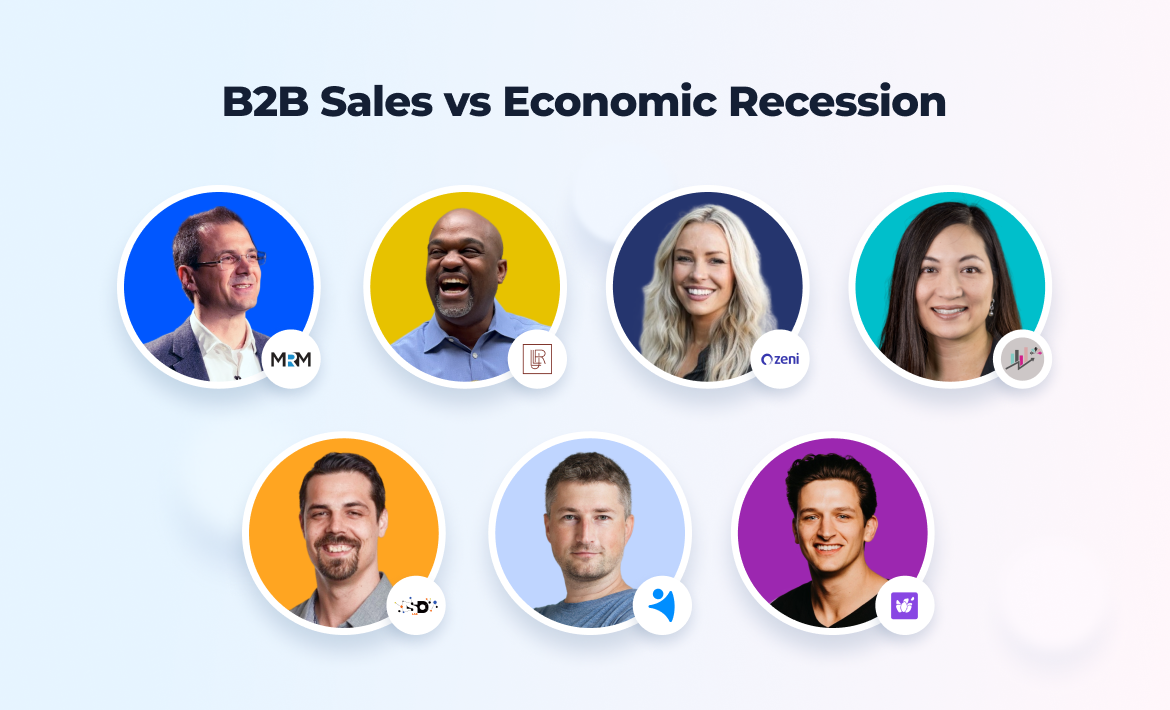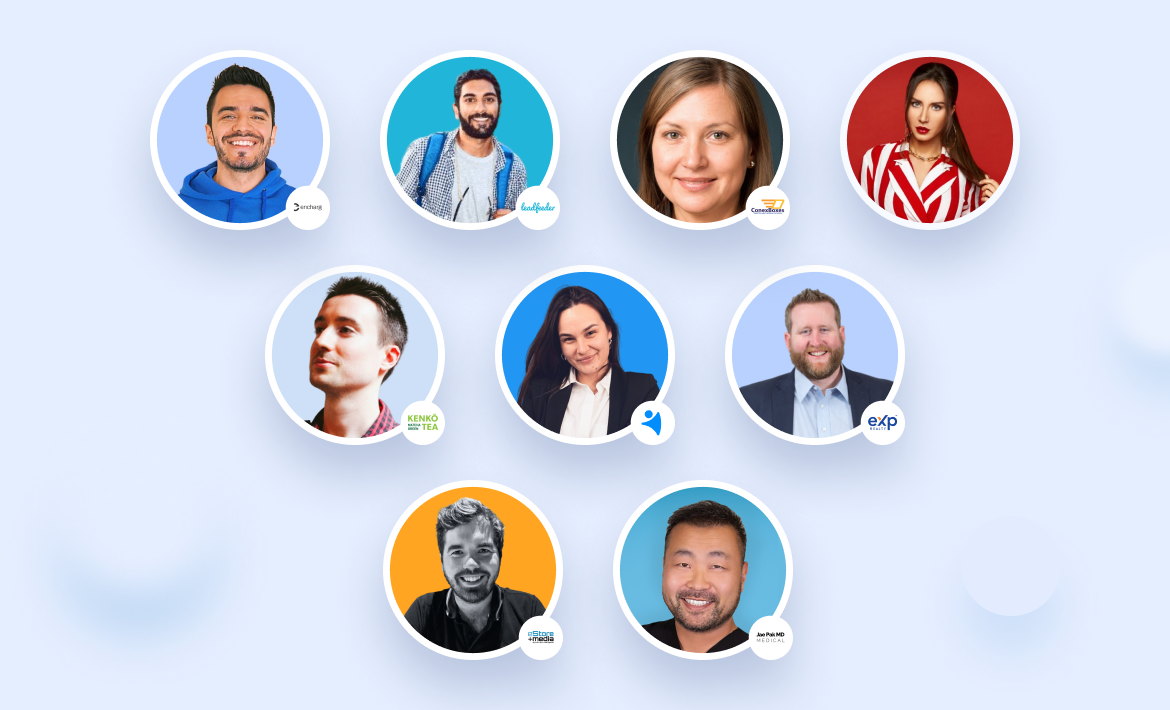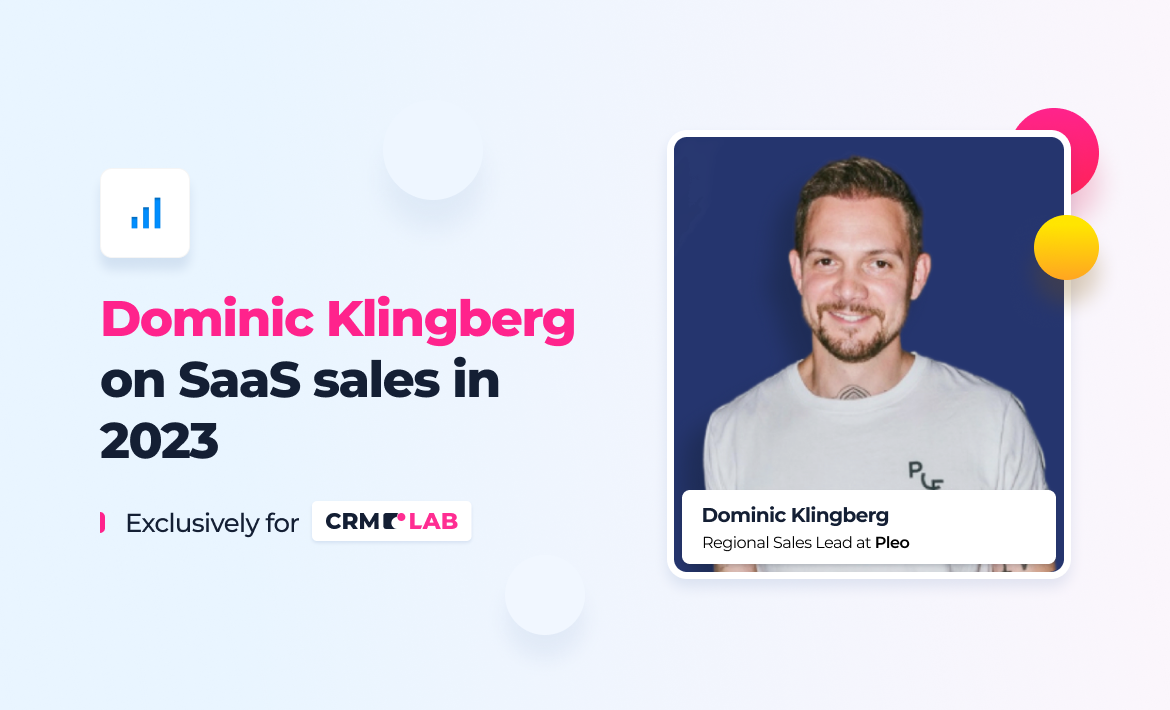In the world of SaaS sales, the landscape is constantly evolving, with new technologies and changing economic conditions having a significant impact on the strategies employed by sales teams.
To gain insight into the current state of SaaS sales and what the future may hold, we sat down with Dominic Klingberg, Regional Sales Lead at Pleo, a leading provider of expense management software for businesses.
Who is Dominic Klingberg?

Dominic Klingberg is the regional sales lead at Pleo, a unicorn business expense management software in Europe with a $4.7 billion valuation. He's a sales coach and graduate of Pavillion Frontline Sales Manager School, teaching methodologies like MEDDIC, BANTR, and SPICED. He also hosts the "Sales & Pepper Interviews" podcast, exploring the world of sales and business.
In this interview for CRM Lab by NetHunt CRM, Dominic shares his thoughts on a range of SaaS sales topics, including the impact of the economic recession on SaaS sales, the rise of AI and how it is changing the game, and best practices for creating an effective SaaS sales strategy. He also discusses the importance of picking the right sales model for a SaaS business and shares his insights into the best channels for customer acquisition.
For those looking to improve their conversion rates, Dominic also offers tips for converting trial users into paying customers, while ensuring that the company does not come across as too invasive. And finally, he sheds light on Pleo's onboarding process, providing valuable insights for other SaaS companies looking to improve their customer experience.
— How has the SaaS sales landscape changed in recent years? What are your predictions regarding the future of SaaS sales?
The first important thing to mention is the rapid growth of numerous startups over the past 3-4 years, which has been both due to and in spite of the pandemic. The need for companies to digitalise their operations has given rise to the swift expansion of various SaaS companies catering to diverse niches.
In the dynamic world of venture capitalists (VCs), funding rounds have been nothing short of mind-boggling! Startups have bagged a mammoth amount of money, which, when compared to their revenue, seems almost surreal. The primary focus was on rapid growth, no matter the cost!
However, fast forward to today, and we see a dramatic shift in the scenario. Now, the buzz is all about cost-efficiency, and companies are leaving no stone unturned to tighten their purse strings.
Over the past year, there has been a surge in the number of layoffs, with many major tech companies announcing the termination of hundreds and thousands of employees.
But it’s not just layoffs. Another indicator is the number of companies that are currently going through a hiring freeze, businesses that have put their hiring process on hold.
To keep their heads above water, businesses are keeping a hawk's eye on their expenditure, and identifying areas where they are haemorrhaging money. The goal is to build a sustainable company with lower burn rates, which may mean axing business units that are a drain on finances, and rethinking strategies to boost efficiency.
That’s the biggest change we see in the industry these days.

— Would you say that selling to businesses has become more challenging because of this? As you just mentioned, companies are desperately trying to optimise their costs. Wouldn't that mean they are becoming stingier about purchasing new products?
Well, it's a bit of a mixed bag, really.
On the one hand, there's a high chance that some startups may go bankrupt in the next 24 months as they run out of money and fail to secure any more investments from VCs.
But, here's the thing — the wheat will soon be separated from the chaff, with good companies continuing to grow and the not-so-good ones closing shop.
Of course, if you're a SaaS business offering tools or features that are just a "nice-to-have" sort of thing, then people might not be willing to fork out their hard-earned cash for it.
However, if your tool is designed to help businesses become more efficient or save money, then it will be in high demand, even during a recession.
My prediction is that if you manage to have your fingers on the pulse of what businesses truly need, you shouldn’t have a problem increasing your sales over the next couple of years.

— Have you already felt the impact of the economic recession? Have you changed your sales processes to match the current situation?
Yeah, absolutely!
Pleo experienced significant growth after receiving our Series C Funding, with our employee count skyrocketing from 200 to around 1000 in just one year. We were onboarding about 100 new hires every month, so it felt like we were practically a new company each time!
However, in September and October 2022, we had to make some tough decisions and lay off about 15% of our workforce.
While this didn't affect our sales organisation, it did make us tweak our strategy. We still want to grow, but we need to do it more efficiently.
Even though our product is pretty recession-proof (our platform helps businesses gain transparency and control over their expenses, which is more important than ever), we still had to adapt how we communicate with prospects and leads.
One of the most prominent changes we’ve made is revamping our outreach approach and value proposition, tailoring them to the current realities.
It’s important to acknowledge the current situation and remain relevant. Don't be out of touch!
— Could you give me a specific example of how you’ve changed the wording of messages in your outreach sequence?
In the past, the focus was on offering cool features and making it easy for people to spend. But now, the conversation has shifted to cost savings and achieving greater transparency and control over expenses.
It’s a mindset shift that SaaS companies need to account for, Today, it's less about offering something flashy and more about providing a solution that helps businesses stay afloat and manage their cash flow.
— What about the AI revolution? How has the rise of ChatGPT and alternatives changed the SaaS sales game for you?
This is one of my favourite topics right now! Recently, I published a new episode of my podcast where I interviewed Thibaut Souyris. He shared some valuable insights about how he uses ChatGPT in his sales processes. Specifically, he talked about his use of ChatGPT in outreach and how it helps him book more meetings with the help of AI.
If you look at LinkedIn, you'll see that people are steadily becoming true ChatGPT adepts; it’s everywhere!
I personally use it every day to gain inspiration and save time on administrative tasks. It's incredibly helpful and will undoubtedly change the way we work. For anyone working in sales, and especially SaaS sales, it's essential to take a closer look at ChatGPT. If you don't use it, someone else will, and they'll book more meetings than you, potentially stealing your sales opportunities.

However, it's important to remember that you can't just ask a simple question and expect a detailed answer. To get the information you need, you must learn how to use it properly and give specific, detailed prompts. If you invest time in mastering it now, you'll be ahead of your competition in the coming months.
But remember, ChatGPT is just one example of the AI technology companies incorporate into their processes. I think we’ll soon see a lot of competition in that space. It's an exciting time to be a part of this industry!

— So, you essentially say that there are more opportunities for SaaS salespeople when it comes to using AI than there are threats, right? I know that quite a fair share of SaaS sales professionals are a bit worried about such rapid advancement of this technology as they fear it will completely replace them at work. I personally don’t believe that, but what do you think?
I'm with you on that. When we take a step back and look at 100 years ago, the streets were dimly lit by candles, and people would walk around to light them up. But now, we've got electricity to brighten up our nights.
Similarly, with ChatGPT, it's all about automating mundane tasks and freeing up your brainpower for more important tasks. You don't want to waste time on things that don't require much thinking.
Of course, you don't want to copy everything ChatGPT generates blindly. You'll need to carefully review and make tweaks as necessary to ensure it fits your intended purpose. But, it can certainly help you come up with new ideas and simplify your workflow.
AI-generated content won't make SaaS salespeople obsolete. It'll simply change the tasks they need to focus on. Remember, a decade ago, salespeople were knocking on doors and making calls. Today, they're utilising social media for outreach.
It's all about adapting to the changing landscape and staying ahead of the curve.
— You mentioned more complex things that can’t be delegated to AI (yet). Designing a strategy for sales is one of them. Please, share some best practices for creating an effective SaaS sales strategy that resonates with your potential customers.
There’s no one-size-fits-all solution. It depends on your business:
- What is your business model?
- What is your average deal size?
- What do your contracts look like?
- How aligned is it with your company strategy?
So, I can’t give you a specific framework. However, I can give you a tip that works for me!
You can still give AI a try. Ask it to act as a business consultant, as an experienced head of sales. Describe the challenges you face in detail and get the tool to suggest some solutions. They might be basic, but they might also be something you haven’t considered. So it’s worth giving it a shot.
For example, here’s what my team does…
If you have an ICP and need to find, say, 50 prospects that fit the following criteria, a tech company in Germany with 50-100 employees, you can just ask ChatGPT to generate a list of those companies. Normally, you’d use prospecting tools, but with the AI tool, you can do it on your own.
The same goes for strategy. Of course, you can’t ask the bot to give you a ready-made strategy, but you can list your challenges and ask it what it would do if it were a specialist.
— What about picking the right sales model for a SaaS business? Since almost every market is saturated at this point, do you believe that it’s currently possible to increase sales using only inbound sales?
There's no simple "yes" or "no" answer to this question; the approach you take will depend on the nature of your product.
For example, at Pleo, we have split our sales team into two sub-teams: one that focuses on SMB leads, and another that works with mid-market clients.
For SMB leads, a product-led approach can often be successful, with inbound sales being sufficient. However, mid-market deals tend to be more sales-led, requiring a more robust outbound strategy and more touches.
If you're running a company with low prices, adopting a sales-led approach may not be profitable, and a product-driven approach may be more suitable.
Ultimately, your sales strategy should align with your Go-To-Market strategy.
— From your experience, what are the best channels for customer acquisition at the moment? What works best for you?
Like with many other elements of the SaaS sales strategy, there isn’t one best customer acquisition channel that works equally well for every SaaS company.
To find the one that fits your business best, you need to communicate with your ICPs and ask them where they can be reached. You need to get a solid understanding of where your customers spend their time, when and where they’re most susceptible to sales and marketing efforts, and have the most prominent purchasing intent.
But as you contact more people about this, you’ll quickly realise that different customers prefer different things. Some are more fond of the idea of receiving cold calls, while others would much rather get a LinkedIn voice note, a video, or a good old cold email. That’s why it’s particularly important to never say “no” to trying different things and subjecting them all to A/B testing.
My best piece of advice is making as much use out of your CRM data as possible. Look into every step of your outreach sequence and identify the channels that have the highest conversion rates.

— As many other SaaS businesses, you offer free trials to customers. What are your best tips for converting trial users into paying customers?
First of all, you should create a separate pipeline within your CRM system specifically for trial users. Their progress down the funnel would be determined by how they engage with your product, such as their frequency of logins, the number of actions taken, and the amount of features tested.
To further optimise your sales approach, consider implementing a scoring system where points are allocated to free trial users based on their activity data. When a user demonstrates a high level of engagement and displays a strong potential for becoming a paying customer, you can proactively reach out to them and promote a Premium plan that offers more benefits.
On the other hand, if a user has not been very active, it may be worthwhile to contact them to inquire about any issues they may have encountered and provide additional information on how to better set up and use the product.
— How do you make sure you don’t come across as a little bit of a stalker when you do that? At the end of the day, it might be a bit creepy when a company representative reaches out to you claiming that they know what you’ve been doing with their product.
It’s all about the wording of your outreach. Avoid sounding condescending or overly pushy, and instead focus on helping your customers achieve their business goals.
🗣️ “What’s your goal with our product? What are you trying to achieve with the help of X? I’ve noticed that you haven’t use X, Y, and Z but they can be extremely useful for someone with goals like yours. Would you like to schedule a quick call, and I’ll give you a quick onboarding and help you get the most out of the product?”
You may be surprised by how positively customers respond to this level of personalised attention.
In fact, many will appreciate your willingness to assist them and make the most of the product. In today's fast-paced business world, people don't always have the time to figure out new products or services on their own, so your outreach can be a valuable resource.
— And what does your onboarding process look like?
We do a bit of everything. We have an onboarding email sequence that every customer receives once they register in the product, we offer gamified onboarding in the product, and we conduct calls with new customers to show them around.
With smaller customers, we try to automate the onboarding process as much as possible, putting more weight on automated onboarding sequences and minimising human interaction.
When we get a bigger, more valuable mid-market client, we provide them with a personal account manager that is responsible for all the onboarding activities.
Regardless of the size of the customer you’ve acquired, it’s important to ensure that your customer success managers and sales managers work collaboratively, and all their efforts are well-aligned.
Table of Contents
Crack the sales formula with CRM Lab
Twice a month, receive actionable CRM content to your inbox.



